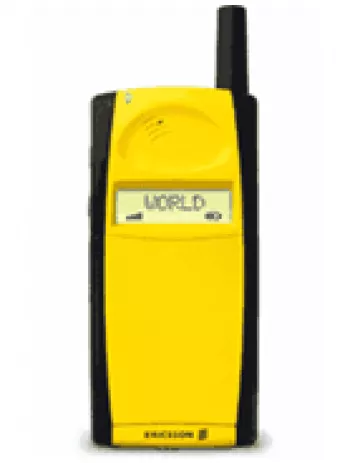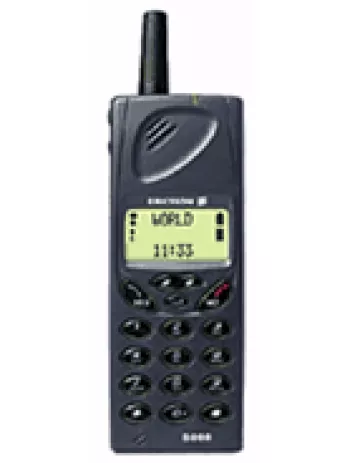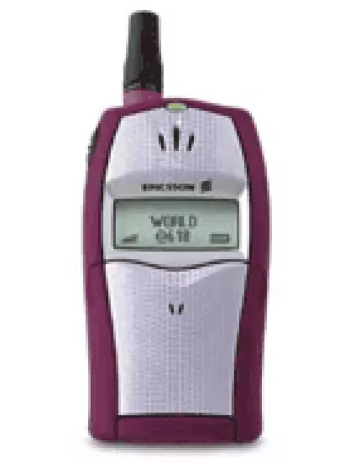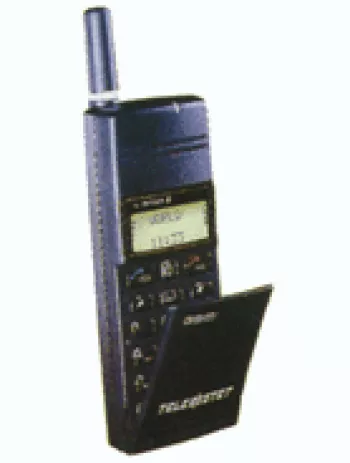
Overview of Ericsson R520m
The Ericsson R520m is a classic feature phone that emerged in the early 2000s when the mobile phone market was transitioning from basic telephony functions to more advanced features like wireless connectivity and email. Announced in Q2 of 2001, this device was designed to cater to business users and professionals looking for reliable communication capabilities outside of the contemporary mobile phones' offerings.
Design and Build
The Ericsson R520m features a typical bar form factor that was popular at the time. It measures 130 x 50 x 16 mm, which means it was relatively slim and lightweight with a weight of 105 grams. It's designed to fit comfortably in hand, offering a simple yet effective interface with a monochrome graphic display capable of showing five lines of text.
Display
Even though the phone does not boast a colored or large display, its monochrome graphic screen was efficient for displaying essential information such as contacts, dialing numbers, and reading SMS. While modern users may find this limiting, at its time, it was sufficient for performing basic tasks without draining the battery quickly.
Network Technology
The Ericsson R520m operates on GSM technology and supports the GSM 900/1800/1900 bands, making it versatile for international roaming. This was a significant feature for international business travelers who needed reliable phone service across different countries without switching devices.
Battery Life
The device is powered by a removable NiMH battery with a capacity of 540mAh. For its time, it offered reasonable standby time of up to 200 hours and a talk time of up to 7 hours and 30 minutes. This ensured users could use the phone throughout the day without needing frequent recharges.
Connectivity Features
Despite its limited connectivity options by today’s standards, the R520m was advanced for its era, offering Bluetooth 1.0b for wireless connections and an infrared port for transferring files between compatible devices. This was particularly useful for exchanging business contacts or calendars.
Communication and Software
The Ericsson R520m was built with communication in mind. It supported SMS texting and email, allowing users to communicate efficiently. Though limited by today’s standards, the inclusion of a WAP 1.2 browser enabled basic internet access, which was a significant advantage at the time.
Storage and Memory
The phone could store over 500 contacts in its phonebook, a remarkable feature back then. However, it did not provide expandable storage via a card slot, which implies users had to rely entirely on its internal memory for storing contacts and other data.
Sound and Alerts
With no loudspeaker option, the R520m relied on ear and vibration alerts. Users could download monophonic ringtones to personalize their alert sounds, a feature that was quite novel and fun at the time.
Other Features
The phone featured basic utilities like an alarm clock and downloadable games. Although it lacked more sophisticated features like Java support or sensors, it served its purpose well as a reliable communication tool for professionals.
Conclusion
The Ericsson R520m remains a memorable device in the evolution of mobile phones. Though discontinued, it represents an era of mobile technology focused on reliable voice communication, with early introductions to wireless data capabilities that would spark future innovations. While some of its features may appear archaic today, it played a crucial role in the transition from mobile telephony to more connected and multifunctional mobile communications.
Key Features of Ericsson R520m
- Tri-band GSM support (GSM 900/1800/1900)
- GPRS capability for mobile data
- Compact dimensions: 130 x 50 x 16 mm
- Lightweight design: 105 g
- Bluetooth 1.0b support for wireless connectivity
- Infrared port for additional connectivity options
- Monochrome graphic display supporting 5 lines of text
- Large phonebook capacity with 500+ entries
- Vibration and downloadable monophonic ringtones
- Messaging capabilities include SMS and Email
- Supports WAP 1.2 Browser for internet access
- Removable NiMH battery with up to 200 hours of standby time and 7.5 hours of talk time
Drawbacks of Ericsson R520m
- No EDGE support for faster data connectivity.
- Monochrome graphic display which limits visual experience.
- Limited display resolution with only 5 lines.
- Absence of a camera.
- No loudspeaker available.
- Lacks 3.5mm audio jack.
- No WLAN support for wireless internet connection.
- No GPS positioning feature.
- No radio functionality.
- Lacks USB connectivity support.
- No Java support for additional applications.
- Utilizes older Bluetooth version 1.0b.
- No memory card slot for storage expansion.
- Removable NiMH battery which is less efficient compared to modern alternatives.


View Also
More Phones
All Rights Reserved +14266 Phones © Mobilawy 2025

























